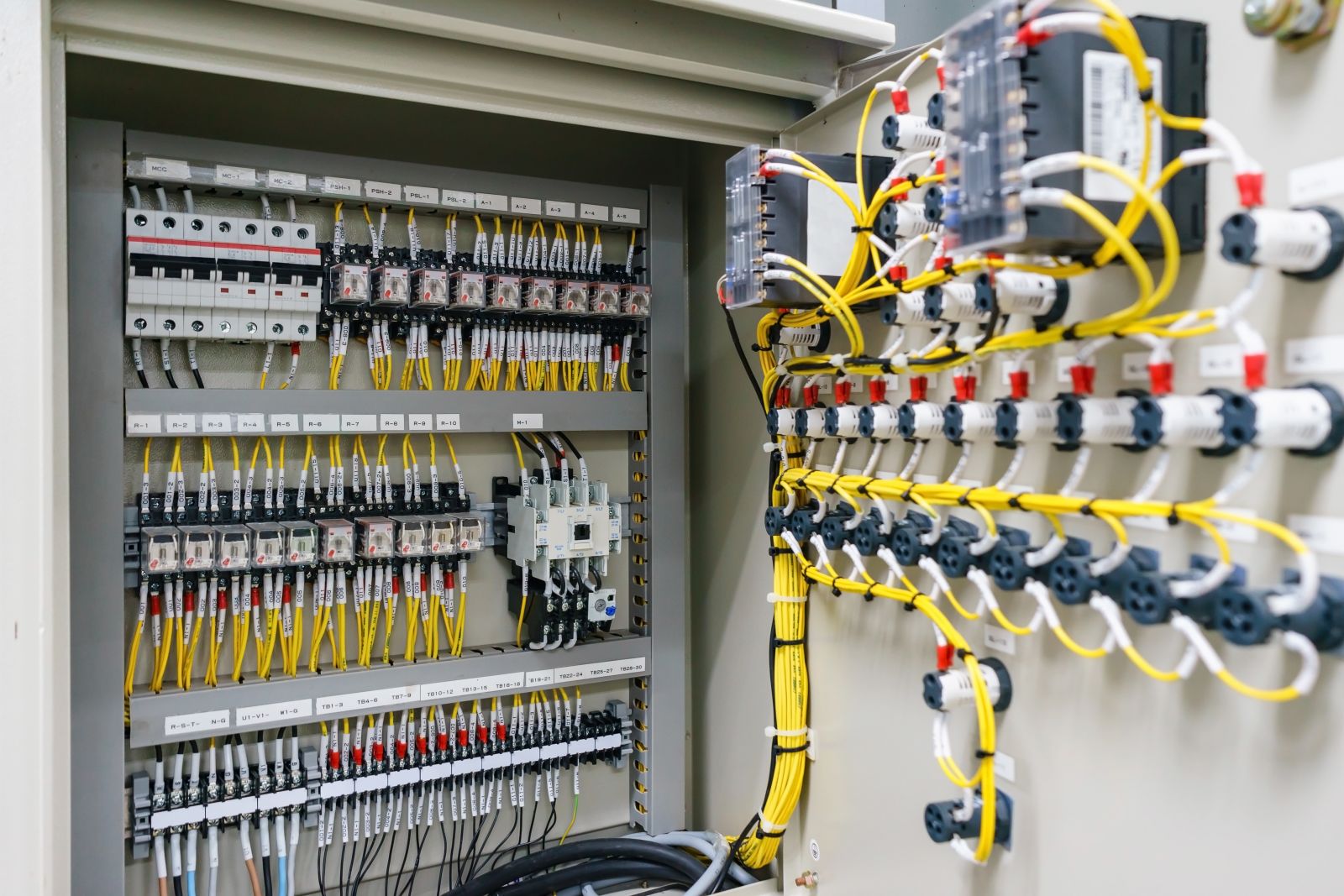UKCA Marking: Supply of Machinery (Safety) Regulations Guide
The Supply of Machinery (Safety) Regulations are health and safety requirements that relate to machinery used in the workplace and at home.
We're actively recruiting for a range of roles across sales, engineering, IT and warehouse. Check our careers page to see open positions including apprenticeships.

Whether you’re moving a single piece of equipment or an entire production line, our trusted team of engineers can support every step of your move, from rigging to end-to-end relocation support across the globe.

4 min read
Admin Sep 19, 2023 6:44:42 PM
Table of Contents
The Electromagnetic Compatibility (EMC) Regulations ensure that electrical and electronic equipment a) doesn’t cause electromagnetic disturbance, or b) isn’t disturbed by electromagnetic interference.
Conformity with the regulations is part of UKCA Marking and essential for many types of electrical and electronic equipment that is likely to generate, or be subject to, electromagnetic disturbance.
UKCA marking came into effect on 31st December, 2020, and is the new mandatory mark for certain equipment and products supplied or sold in Great Britain (England, Wales and Scotland).
IES provides assessment and testing for your electrical and electronic equipment, ensuring conformance to the EMC Regulations and allowing you to achieve UKCA Marking compliance.
This guide explains the purpose of the EMC Regulations, who enforces them and what they cover. We also advise on areas including key responsibilities for manufacturers, how to prepare your equipment for testing, declaration and documentation, and how IES can help to achieve compliance.
The EMC Regulations set out limits for electromagnetic emissions from electrical and electronic equipment.
Two main objectives of the legislation are to:
a) prevent disturbance of telecommunication, radio and other mediums from electrical and electronic equipment.
and
b) ensure immunity of electrical and electronic equipment to electromagnetic interference.
The EMC Regulations are enforced by National Trading Standards and Ofcom in the UK.
In cases of non-compliant equipment and products, the Health and Safety Executive, Department of Trade and Industry and TUV SUD BABT (formerly known as the British Approvals Board for Telecommunications) can play a part in investigations.
The EMC Regulations concern the compatibility of equipment with electromagnetic fields.
They cover electrical and electronic equipment - including apparatus and fixed installations - which are placed onto the UK market or taken into service.
The EMC regulations apply to all electrical and electronic equipment which are prone to generate electromagnetic disturbance, with the exception of:
It is the legal manufacturer of equipment or a product that must demonstrate compliance with the regulations. There are two routes to declaring compliance with the EMC Regulations. Both routes are concluded by the manufacturer making a Declaration of Conformity (DoC).
Manufacturers will decide between the following:
For electrical products which are not considered to be of concern in relation to the regulations. This is a logical approach which requires a comparison of the performance of the specific equipment with the harmonised standards. By relying entirely on the relevant harmonised standards for equipment, the Standards Route doesn’t always require testing. The DoC effectively states that if the equipment were to be tested against these standards, it would pass.
This route is for electrical products with no harmonised standards, or if testing takes place away from the manufacturer’s premises. A Technical Construction File including results of assessments will be audited to confirm that the electrical or electronic equipment complies with the EMC Regulations. Other information in the Technical Construction File may include; description, design and drawings of the equipment; proof of compliance with harmonised standards or an explanation of how, and evidence that, the requirements of the regulations have been met; and a DoC.
There are several emissions and immunity assessments that test for conformity with the EMC Regulations:
The five classes of assessments are as follows:
1. Radiated emissions – checking that the equipment doesn’t emit unwanted radio signals
2. Conducted emissions – checking that the equipment doesn’t emit unwanted signals along connections
3. Radiated susceptibility – checking that the equipment can operate normally under an electromagnetic field
4. Conducted susceptibility – checking the equipment can operate normally when unwanted signals are applied to power leads and other connections
5. Electrostatic discharge – checking that the product is resistant to a reasonable amount of electrostatic discharge
We ask customers to make the following preparations ahead of assessments and testing:
For electrical and electronic equipment that falls under the EMC Regulations, the following documentation is required by manufacturers:
For compliance with the EMC Regulations, the UKCA mark should be affixed directly on electrical equipment and products, their packaging, and guarantee certificates. The UKCA mark - which should be displayed clearly - shows that the equipment meets the requirements of the regulations and can be sold on, or supplied to, the UK market.
Manufacturers taking the Technical File Construction route to compliance will need to provide a Technical File. This collection of documents includes:
Both routes to compliance (standards route and Technical File Construction route) require a DoC to be made. The DoC takes the form of a written declaration, which can be made by the manufacturer or an appointed authorised representative. It declares that the equipment is compliant with the EMC Regulations.
The DoC includes; the identification of the manufacturer or appointed authorised representative, details of the equipment, which harmonised standards have been applied, and the year the equipment was UKCA marked.
Manufacturers and other responsible parties not complying with the EMC Regulations are committing an offence and risk a fine, imprisonment (a prison term of up to 3 months), or both.
Non-complying equipment and products may be recalled from the UK market immediately.
IES offers a range of Compliance Testing services to high-technology manufacturers and OEMs.
We smooth the route to compliance with the EMC Regulations and UKCA Marking, with on- or off-site assessments for your new, modified and second-hand equipment.
Our testing solutions and reporting are used by manufacturers to support a self declaration for electrical and electronic equipment. A self declaration can negate the additional expense of appointing a UK Approved Body (an organisation that provides UKCA certification services).
IES gives you total confidence in your route to compliance with the EMC Regulations.
Compliance Testing from IES includes:
Discuss your Compliance Testing requirements with IES today - send us a message.
Stay up to date with the latest news and resources from our experts.

The Supply of Machinery (Safety) Regulations are health and safety requirements that relate to machinery used in the workplace and at home.

For companies selling or supplying electrical equipment to the UK market, compliance with the Electrical Equipment (Safety) Regulations is necessary...

The Machinery Directive 2006/42/EC is a set of EU health and safety requirements that apply to new and modified machinery used in the workplace. ...